On September 2, 1973, we heard the sad news that J.R.R. Tolkien had p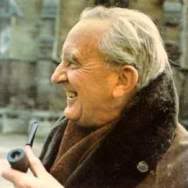 assed away.
assed away.
Continue reading “Today in Middle-earth, September 2: In Remembrance of J.R.R. Tolkien”
On September 2, 1973, we heard the sad news that J.R.R. Tolkien had passed away.
Continue ReadingOn September 2, 1973, we heard the sad news that J.R.R. Tolkien had p assed away.
assed away.
Continue reading “Today in Middle-earth, September 2: In Remembrance of J.R.R. Tolkien”
In 1967, Tolkien began writing a letter to his son, Michael, where he shared his perspectives on cultivating faith. Tolkien likened the character of faithfulness (‘loyalty’) to that of a full-grown tree — a living organism that must be tended to by its keepers (Letter 306).
While the reasons for this letter may be forever lost to time, the excerpt reveals a fundamental notion in Tolkien’s mind: The symbolism of great faithfulness with the thriving health of trees.
There is no resemblance between the ‘mustard-seed’ and the full-grown tree. For those living in the days of its branching growth the Tree is the thing, for the history of a living thing is pan of its life, and the history of a divine thing is sacred. The wise may know that it began with a seed, but it is vain to try and dig it up, for it no longer exists, and the virtue and powers that it had now reside in the Tree.
Very good: but in husbandry the authorities, the keepers of the Tree, must look after it, according to such wisdom as they possess, prune it, remove cankers, rid it of parasites, and so forth. […] But they will certainly do harm, if they are obsessed with the desire of going back to the seed or even to the first youth of the plant when it was (as they imagine) pretty and unafflicted by evils.
The other motive […] aggiornamento: bringing up to date: that has its own grave dangers, as has been apparent throughout history.
Letter #306, The Letters of J.R.R. Tolkien
In my previous article, we discussed clues from the trailer and images of Amazon’s The Rings of Power that directly led us to identifying Sauron’s haunting presence on Middle-earth. Here, I will discuss how The Rings of Power might be using trees to illustrate the shrinking faith of the Númenoreans (Men) and the Noldor (Elves).
We begin in the island nation of Númenor. The Númenoreans are Men descended from the line of Elros, brother of Elrond. The line of the Kings of Numenor going back to Lúthien, daughter of the Sindarin King Thingol and Melian the Maiar. Of Lúthien’s descendants, Tolkien writes that ‘her line shall never fail’ (A Knife in the Dark, The Fellowship of the Ring).
In the King’s Court at Armenelos, Númenor’s capital, a white tree blooms: Nimloth the fair (Nimloth is Sindarin for ‘White Blossom’). Descended from a tree made in the likeness of Telperion for the Noldor of Tirion (Galathilion, the’White Tree’ of Yavanna, The Silmarillion), Nimloth was gifted as a seedling by the Eldar of Tol Eressëa in Aman. Her white petals gleam with the setting Sun and her scent fills the air of King’s court. Nimloth is the symbol of friendship between Men and Elves. (Cite.) A sign of the Númenor’s faithfulness to Eru and her Elven heritage.
The Númenoreans retained the dedications and order, but altered the fourth day to Aldëa (Orgaladh) with reference to the White Tree only, of which Nimloth that grew in the King’s Court in Númenóreans [my emphasis] was believed to be a descendant.
Appendix D, The Lord of the Rings
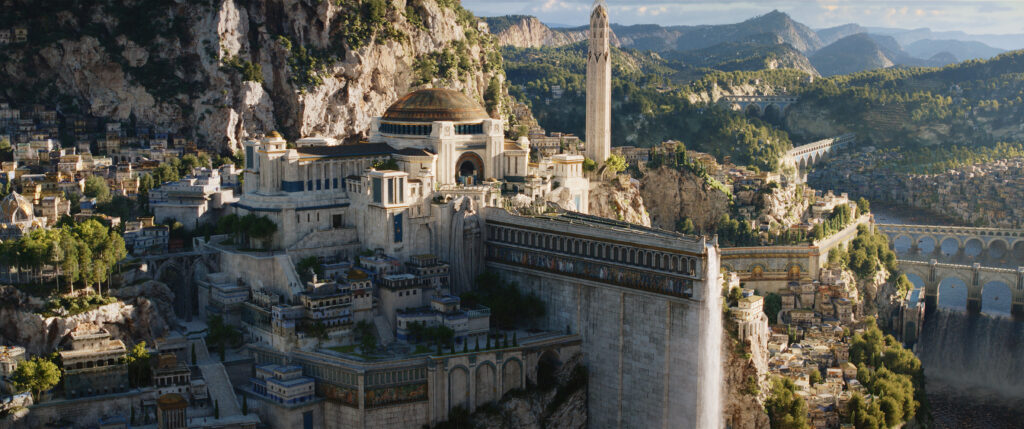
The significance of the blooming white tree is not lost to readers of Tolkien. Soon after arriving in Gondor, Aragorn discovers the sapling borne from the fruit of Nimloth. The discovery astonishes Aragorn, but Gandalf recalls the significance of the sapling:
Verily this is a sapling of the line of Nimloth the fair; and that was a seedling of Galathilion, and that a fruit of Telperion of many names, Eldest of Trees. Who shall say how it comes here in the appointed hour? But this is an ancient hallow, and ere the kings failed or the Tree withered in the court, a fruit must have been set here. For it is said that, though the fruit of the Tree comes seldom to ripeness, yet the life within may then lie sleeping through many long years, and none can foretell the time in which it will awake.
The Steward and the King, The Return of the King
In Gandalf’s words, we see the link between preservation and renewal. The line of Telperion preserved from the days of the Two Trees, and the promise of renewal to its former glory.
But, alas, our first sight of Nimloth in The Rings of Power is a solemn one. Unlike the sapling of Gondor emerging from the snow, we instead witness the opposite, the beginning stages of a fully-grown white tree beginning to wither.
Nimloth is weeping.
Her blossoms scatter onto the royal courts as Queen Regent Míriel and her advisor Pharazôn pause to make note of the moment. Míriel’s face flushes with unmistakable desperation.
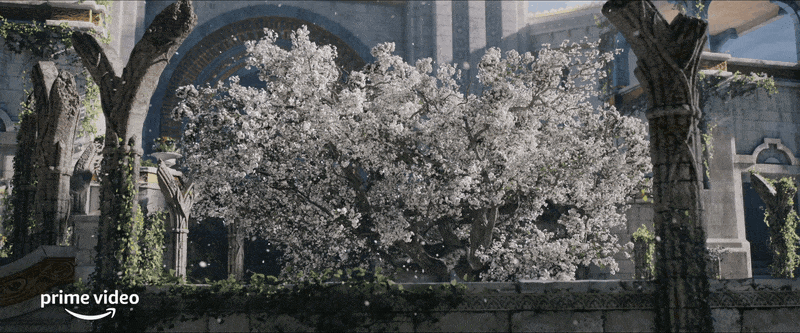
Is this then the first of many signs and warnings of Númenor’s descent to her watery grave? As steward-keeper of Nimloth (Faith), is Míriel’s faith in Eru and Númenor’s alliance with the Elves starting to crumble?
From what we are seeing, Nimloth is shedding her crown; Númenor is dying.
Mortality is, of course, a theme central to Tolkien’s works. Endings are inscribed to the life and stories of every creature on Middle-earth. It is this ill-fate that Tolkien has termed “fading” that the immortal Elves seek to halt. As Tolkien writes of the Second Age in a letter to Milton Waldman:
All through the twilight of the Second Age the Shadow is growing in the East of Middle-earth, spreading its sway more and more over Men — who multiply as the Elves begin to fade.
Letter #131, The Letters of J.R.R. Tolkien
Following the destruction of the Two Trees, their great Elf-king Finwë’s death at the hands of Morgoth, the theft of the Silmarils, and in defiance of Eru and the Valar, the arrival and lingering presence of the Noldor (tribe of Elves descended from Finwë) on Middle-earth resulted in their inevitable decline as a people. Yet, the hubris, ingenuity, and might of the Noldor also meant they were a great force to be reckoned with.
They are the chief artificers of devices (“rings”) that halt fading in the Second and Third Age.
In The Rings of Power, the fading of the Noldor is discreetly translated through the Tolkienian metaphor of suffering trees. Given their presence on Middle-earth is consequential to their continued defiance to the Valar, the Noldor’s faltering faith is represented in their inability to keep their beloved Mallorn trees (plural Mellyrn) from fading.

We are quite familiar with the description of the Mallorn Tree from several Tolkien texts (Letter to Minchin (1956), The Fellowship of The Ring, Unfinished Tales). It is prominently described as having a single smooth bark (“pillar”) of grey silver whose leaves turn to pale gold in the autumn, which carpeted the forest floor through spring and summer.
Its bark was silver and smooth, and its boughs somewhat upswept after the manner of the beech; but it never grew save with a single trunk. Its leaves, like those of the beech but greater, were pale green above and beneath were silver, glistering in the sun; in the autumn they did not fall, but turned to pale gold.
In the spring it bore golden blossom in clusters like a cherry, which bloomed on during the summer; and as soon as the flowers opened the leaves fell, so that through spring and summer a grove of malinorni was carpeted and roofed with gold, but its pillars were of grey silver. Its fruit was a nut with a silver shale.
A Description of the Island of Númenor, Unfinished Tales of Númenor and Middle-earth
Unlike the description of the Mallorn given by Tolkien, we instead witness a dark, crudely shaped, and twisted bark of a large, and what we presume is an ancient Mallorn Tree.
From stills and footage, we can construct a working hypothesis that the Noldor are experimenting with planting a Mellyrn forest in Lindon. As Gil-galad and Elrond commune among the trees at night, our eyes are drawn to the sharp contrast of the younger Mellyrn (right) and the dark, brooding, and ancient Mallorn (left). It appears that the ancient Mallorn is fading, albeit gradually. What may have begun as a silver pillar for a bark has gradually twisted unto itself; stopping the Mallorn from growing to its magnitudinous heights. Her golden leaves also appear to be much darker compared to the younger ones.
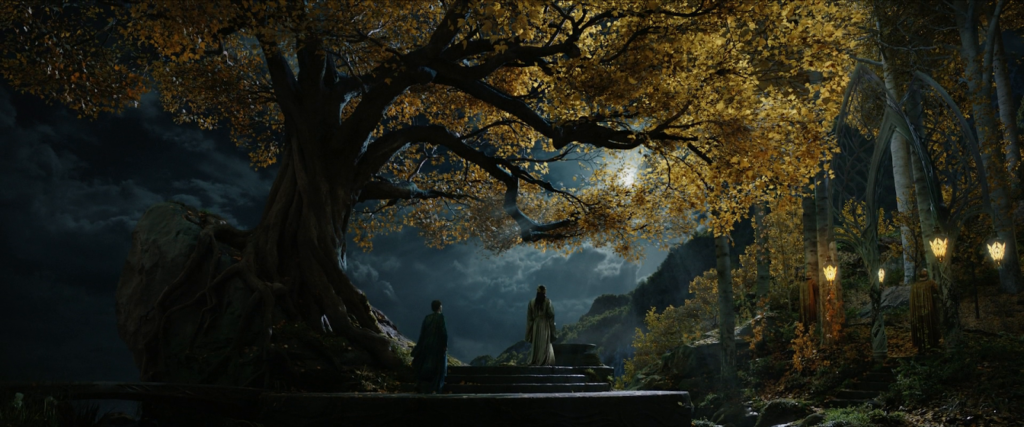
Further evidence for this hypothesis is the telltale presence of a Mallorn sapling in Khazad-dûm. While we cannot confirm why a sapling might be growing in the deep underground caverns of Moria, it is curious that the Elves as keepers of the Mallorn sought the Moria Dwarves as collaborators in testing the possible thriving conditions for Mellyrn.
A simpler explanation might be that the Mallorn sapling was grown from a seed gifted to the Moria Dwarves in lieu of friendship. A possible callback to Galadriel gifting Samwise Gamgee a single Mallorn nut that was consequently planted in the Shire.
Even so, the fading of the Mallorn will be an ongoing leitmotif that will marshal the Noldor into seeking and creating the Rings of Power as a means to halt the Fading of the Elves and their realms.
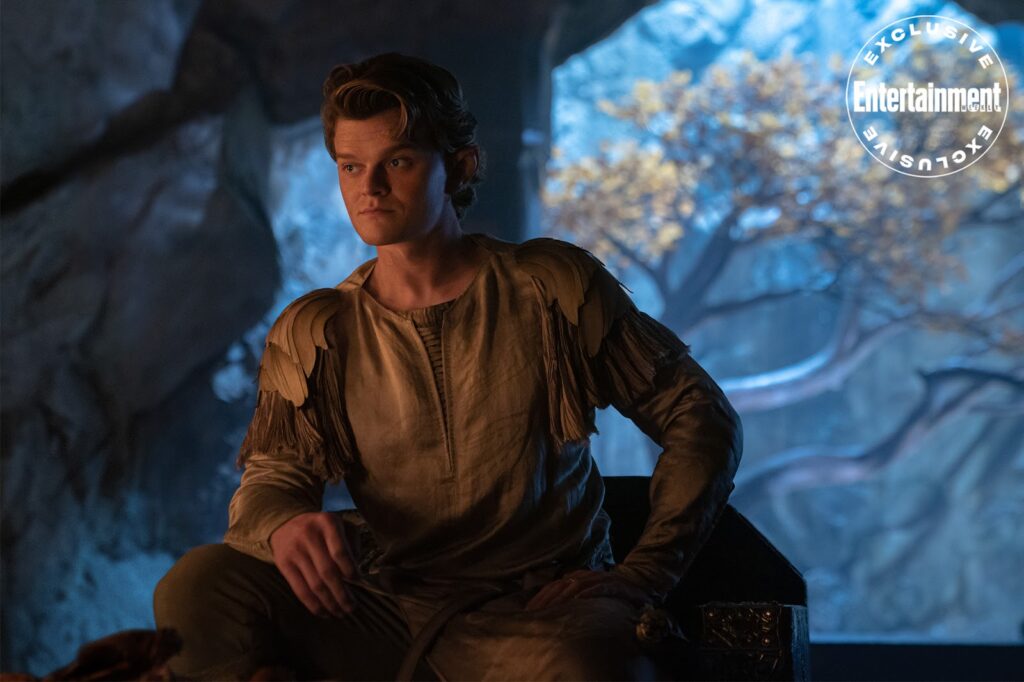
Extra
The Mallorn of Lothlórien.
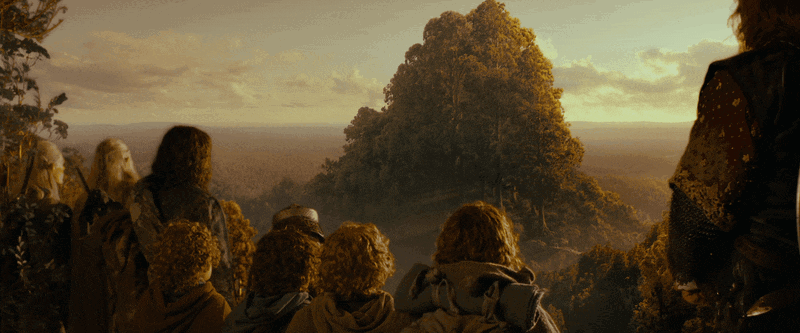
About the author: DrNosy is a scientist (physical science), scholar, and Tolkien enthusiast. Her primary interests lie in review and analysis of The Lord of the Rings: The Rings of Power. She is an active contributor and Reading Room Moderator on TheOneRing.net Discord where she also hosts live open-forum panel discussions on The Rings of Power, The Silmarillion, and a variety of Tolkien-related topics. You can reach her on Twitter.
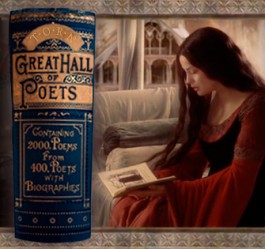
Welcome to The Great Hall of Poets, our regular feature showcasing the talent of Middle-earth fans. Each month we will feature a small selection of the poems submitted, but we hope you will read all of the poems that we have received here in our Great Hall of Poets.
So come and join us by the hearth, and enjoy!
If you have a Tolkien/Middle-earth inspired poem you’d like to share, then send it to poetry@theonering.net One poem per person may be submitted each month. Please make sure to proofread your work before sending it in. TheOneRing.net is not responsible for poems posting with spelling or grammatical errors.
By H. Wiggins
We look to old days, and hold to them fast. When woodlands were green, and Arda still young, From Autumn to Spring, and days now long passed. Of rings and their lords, and sonnets once sung. Before Elves crossed the west in ships of grey, And Fellowships were formed to follow their road. When Dwarves delved deeper into the fray, And men’s lives were long, the seas their abode. The shadows linger, though chained they were thought, And the light of two trees fades into night. Peace will not last, though for long it was fought. Alliances form to carry the light. Free folk will stand true and Sauron will rage For these are the days of the Second Age.
~~ * ~~
When the world troubles me, and all good thoughts have fled, I venture off to visit, the cabin inside my head. Seated before a woodstove, gazing at radiant coals, I sip slowly at my coffee, not worried by endless goals. High up within the mountains, nestled beside a brook, my entrance, a round doorway, similar to that Hobbit book. Sanctuary, peaceful haven, surrounded by fragrant pines, when I’m in need of solitude, it’s stored inside my mind. I do not travel far, to fish, to read, to dream. I merely close my eyes, conjuring a magical scene. Sunsets and brilliant sunrises, appear beyond green hills, mist above blue waters, helps me to gather the Still. When the storm comes calling, I quietly slip away, to that nearby cabin, in a solitary, peaceful bay. © Copyright 2018 by Tom Frye
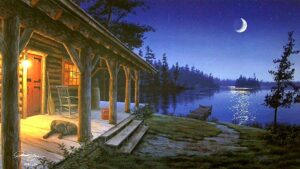
~~ * ~~
Is The Rings of Power drawing inspiration from Tolkien’s incomplete Fourth Age work, The New Shadow?
Upfront: I’m a big believer in Betteridge’s law of headlines. This maxim states that: any headline that ends in a question mark can be answered by the word “no”. There’s every chance that “no” is the right answer to this lede.
Yet, the idea that Rings of Power — in its use of cults — could be cribbing ideas from Tolkien’s fragmentary Fourth Age story remains an alluring one that my mind keeps circling back to.
In part, it’s because of the creepy and unsettling power of that exchange between the as-yet-unidentified wild-eyed fellow and Theo in the trailer: “Have you heard of him, boy? Have you heard of Sauron?”
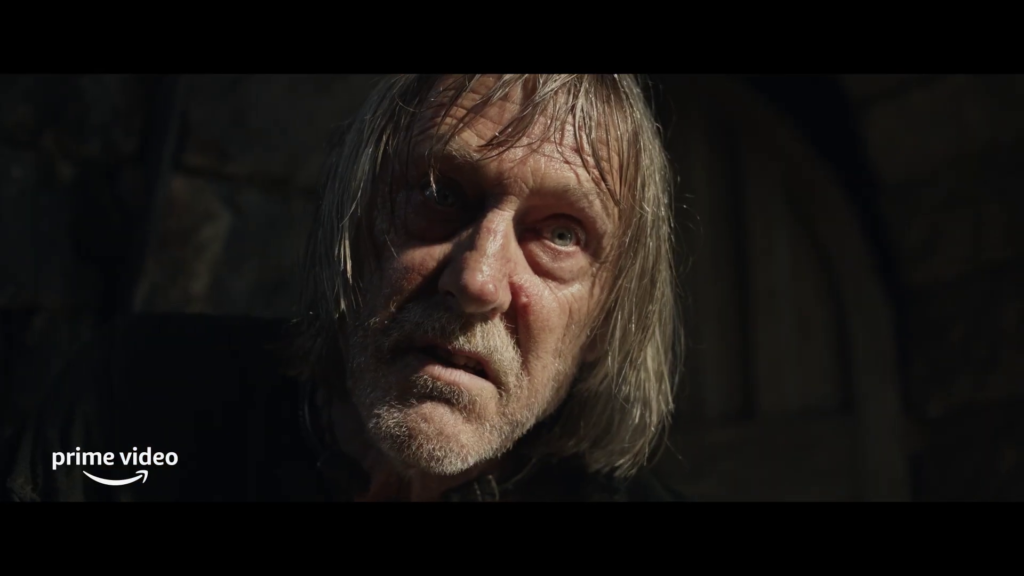
The New Shadow is found in the final volume of The History of Middle-earth amongst a number of essays that Chris Tolkien classified as “Late Writings”. It’s actually quite slim, totalling only 13 pages in my edition — including CJRT’s page-and-a-half introduction and footnotes.
Much of it is a slow-moving philosophical meditation as the two characters — the aging but steadfast Borlas, and the youthful, but seemingly embittered and restless, Saelon — trade barbs about the “roots of Evil”.
Then, in the final few pages this key exchange occurs:
‘You have heard then the name?’ With hardly more than breath he formed it. ‘Of Herumor?’
Borlas looked at him with amazement and fear. His mouth made tremulous motions of speech, but no sound came from it.
‘I see that you have,’ said Saelon. ‘And you seem astonished to learn that I have heard it also. But you are not more astonished than I was to see that this name has reached you. For, as I say, I have keen eyes and ears, but yours are now dim even for daily use, and the matter has been kept as secret as cunning could contrive.’
The New Shadow, The Peoples of Middle-earth
Perhaps it’s mere coincidence. Yet the similarity to the dialogue from the teaser with what Tolkien wrote is startling. There’s also a strong parallel in the visual reaction of Theo and the written one of Borlas: surprise, trepidation, fear.
Is Saelon recruiting to a dark cause? Is the wild-eyed crazy fellow in the trailer doing likewise?
While we shall eventually find out the answer to the latter, we’ll never know the answer to the first question for certain.
Saelon certainly seems fishy — and his later invitation to Borlas to attend a shady, night-time rendezvous to learn more about the mysterious Herumor contains the scent of deceit.
But Tolkien never continued the story.
Within his reasons for abandoning the tale are some illuminating nuggets — nuggets that are, I think, relevant to the reasons for Númenor’s ultimate fall, and what Rings of Power may be trying to achieve with its own Sauron cult(s).
Since we are dealing with Men it is inevitable that we should be concerned with the most regrettable feature of their nature: their quick satiety with good. So that the people of Gondor in times of peace, justice and prosperity, would become discontented and restless…
[and]
I found that even so early [after the death of Aragorn] there was an outcrop of revolutionary plots, about a centre of secret Satanistic religion; while Gondorian boys were playing at being Orcs and going round doing damage.
Letter #256, Letters of J.R.R. Tolkien
This is the very essence of the Akallabêth tale.
The Dúnedain of Númenor want for nothing, and live long lives in peace and prosperity, yet it’s not enough. They grow increasingly unsatisfied with all that they already have. Then, by gradual steps, they “fall”: transforming from helpers in Middle-earth to colonial conquerors and ultimately embarking on a doomed rebellion against the powers of Valinor in a vain quest for immortality.
Sauron’s presence merely hastens a process that was already occurring. Remember that the White Tree in Armenelos — a metaphor for the spiritual well-being of Númenor — was already in decline during the reign of Ar-Pharazôn’s grandfather.
One wonders if that’s exactly what we’re looking at with the trio of dissatisfied-looking folk in white robes in the trailer: “discontented and restless” folk “playing at being Orcs”. Or as Tolkien further outlines in Letter #338: “owing to the (it seems) inevitable boredom of Men with the good: there would be secret societies practising dark cults, and ‘orc-cults’ among adolescents.”
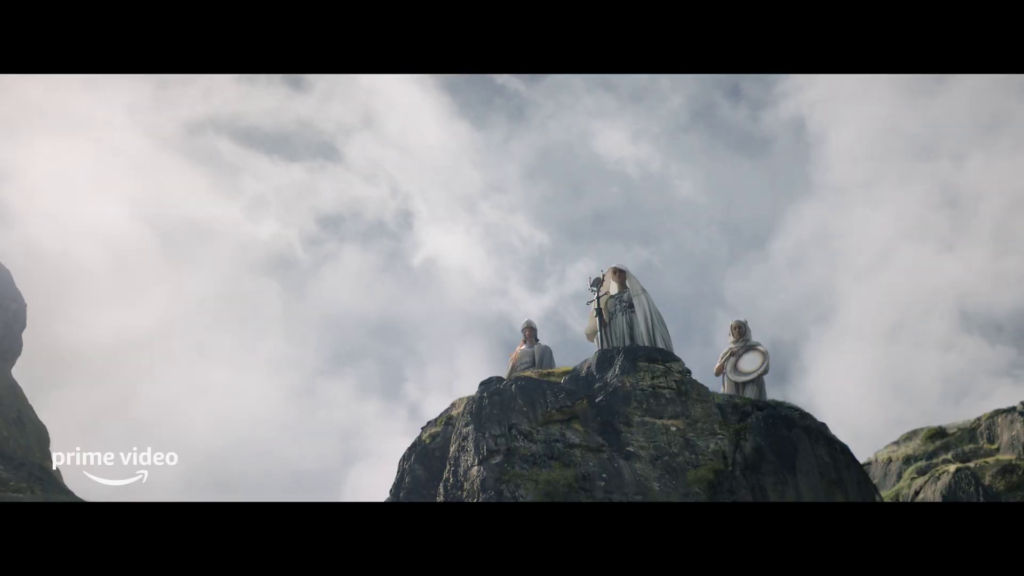
Can we even be sure these people are part of a cult?
First there’s the implication from the dialogue that, more or less, accompanies those frames: “Evil does not sleep. It waits.”
Consider how that parallels the thrust of the very opening of The New Shadow:
‘Deep indeed run the roots of Evil,’ said Borlas, ‘and the black sap is strong in them. That tree will never be slain. Let men hew it as often as they may, it will thrust up shoots again as soon as they turn aside. Not even at the Feast of Felling should the axe be hung up on the wall!’
The New Shadow, The Peoples of Middle-earth
At a surface level, visual tropes further reinforce that assessment.
None of these is individually conclusive; together, they are highly suggestive.
Yet there are aspects that depart from the stereotypical visuals that we might expect from a Sauron cult.
In particular, Sauron’s minions never use white. In the Lord of the Rings, the Eye is always said to be red. The hand is referred to as the black hand.
‘S is for Sauron,’ said Gimli. ‘That is easy to read.’
‘Sauron does not use the Elf-runes.’
‘Neither does he use his right name, nor permit it to be spelt or spoken,’ said Aragorn. ‘And he does not use white. The Orcs in the service of Barad-dûr use the sign of the Red Eye.’
The Departure of Boromir, the Lord of the Rings
And:
He [Mouth of Sauron] it was that now rode out, and with him came only a small company of black-harnessed soldiery, and a single banner, black but bearing on it in red the Evil Eye [my emphasis].
The Black Gate Opens, The Lord of the Rings
And, in The New Shadow, Saelon suggests that Borlas should wear black robes when he extends an invitation to join one of Herumor’s secret meetings.
One might argue that these are all post-Akallabêth developments — after Sauron loses any ability to assume a fair-hue. In fact, Unfinished Tales describes how in Lindon “Gil-galad shut out Sauron’s emissaries and even Sauron himself”, indicating that Sauron used others to further his long deception of being an emissary of the Valar sent to aid the elves.
Those others would have to appear just as innocent as their master regardless of who they were approaching.
Still, white-robed cultists are a visual contradiction to our textual knowledge. Depending on your attitude to the production, that’s either puzzling or concerning.
The second conundrum is the design of the staff of the apparent leader of our trio of cultists. This design seems to employ the symbolism of an eye.
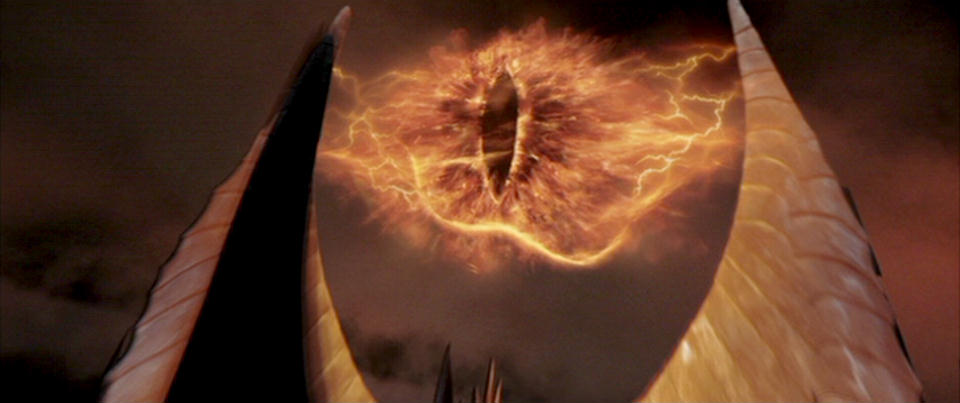
Parallels with Peter Jackson’s “The Eye of Sauron” atop the two spires of Barad-dûr are obvious.
Why is this a problem?
Well, the Rings of Power production already seems to have settled on a different symbol for Sauron — the Númenorean rune (not an elf rune) that Galadriel finds embedded into an anvil in the Forodwaith.
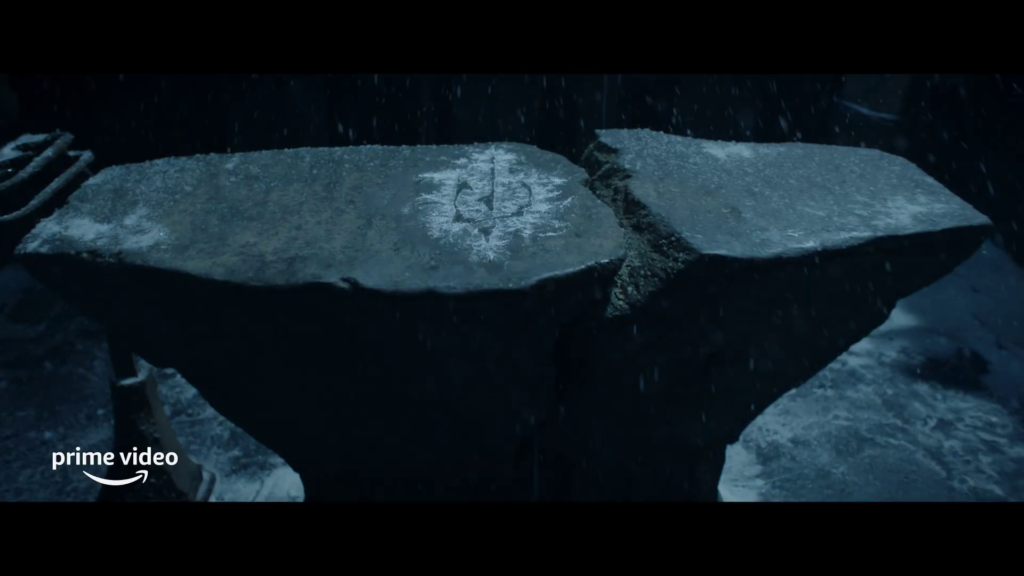
One could refer back to Aragorn’s statement that “neither does he use his right name, nor permit it to be spelt or spoken”. But that’s trying to have it both ways: the rune barred to his minions, but white being okay.
Right now, I can’t readily reconcile this.
Still, between our wild-eyed fellow and Theo and the various appearances of white-robed and hooded individuals, the SDCC trailer feels determined to suggest a dangerous cult with nefarious purposes and uncanny powers.
A glance through the Legendarium reveals fertile ground for cults in Middle-earth.
The very beginning of Akallabêth states:
Men came into the world in the time of the Shadow of Morgoth, and they fell swiftly under his dominion; for he sent his emissaries among them, and they listened to his evil and cunning words, and they worshipped the Darkness and yet feared it.
Akallabêth, the Silmarillion
In The Lord of the Rings, Aragorn tells how the folk of Erech refused the summons of Isildur because they had “worshipped Sauron in the Dark Years”.
And, in outlining the origins of the Mouth of Sauron, The Lord of the Rings tells us of Black Númenoreans who “established their dwellings in Middle-earth during the years of Sauron’s domination, and they worshipped him, being enamoured of evil knowledge.”
A Rings of Power cult need not even be inspired by Sauron. In a 1958 letter Tolkien wrote of the Blue Wizards, guessing that they “were founders or beginners of secret cults and ‘magic’ traditions [my emphasis] that outlasted the fall of Sauron.” Something similar could explain the white robes — although such an explanation raises equivalent problems with the “cult leader’s” staff.
Plus, some of those followers are practitioners of dark art.
Mouth of Sauron is said to have learned “great sorcery” as he gained favour. Gandalf describes the Witch King of Angmar as a “great king and sorcerer… of old”, while The Peoples of Middle-Earth briefly describes not only that Sauron enslaved the spirits of some elves to his will, but that he taught the same necromancies to his followers.
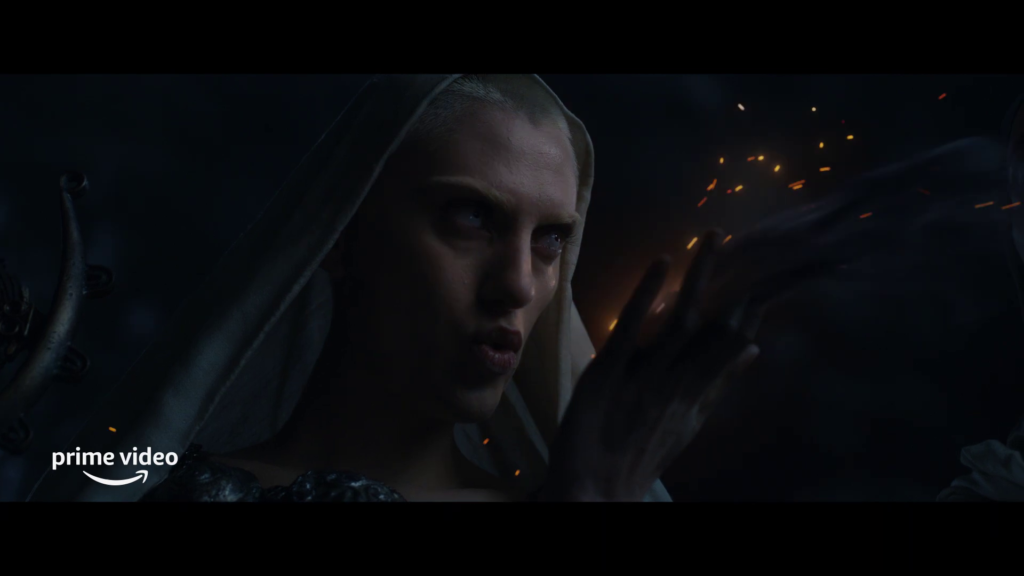
Now, this might not seem much like necromancy, but also recall that Sauron’s nature is one of fire and that, until he was seduced by Morgoth, he was a student and follower of Aule.
Returning to The New Shadow, there’s one final — if slight — parallel with Rings of Power. In one of the recent interviews at San Diego Comic-con, Tyroe Muhafidin observes about his character:
“We find Theo — he’s not the most happy-going guy; he’s not living in the greatest circumstances. He’s living in what you could call the slums. So he’s a bit angsty towards the world.
He finds something in the bottom of a barn, and there’s lot of secrets to it – and he’s dying to find out [them].”
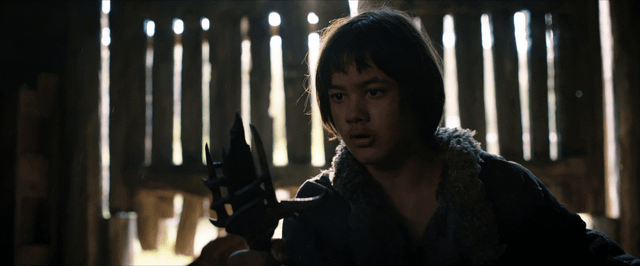
Now, that’s not a life of prosperity. Theo is not driven by “boredom of Men with the good”.
But it does sound as though there’s a chip on Theo’s shoulder — and that’s something that is characteristic of Tolkien’s Saelon — embittered as he remains over being accused by Borlas of “Orcs’ work” after stealing fruit as a young child.
That may prove fertile ground for the creepy old guy in the trailer. Theo might not have previously been attracted, as Tolkien describes it in The New Shadow, to “tales of the Orcs and their doings”.
“I had not been interested till then. You turned my mind to them.”
BOOTNOTE
There is one other comparison with these cultists that I simply cannot overlook. But it’s not a Tolkien-based one — it’s one with Mervyn Peake, the famed author of the gothic masterwork, Gormenghast.
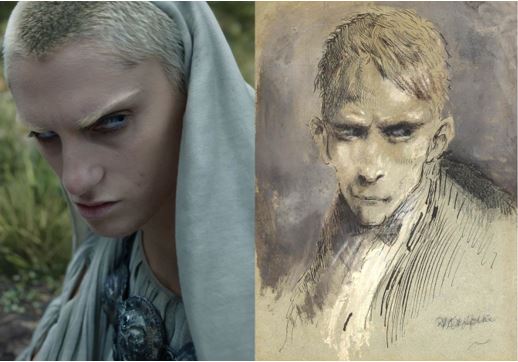
Peake was also an impressively talented sketch artist, and a friend pointed out that one of Peake’s sketches of his arch-villain Steerpike bears an uncanny resemblance to a certain cultist. Now, having seen it, I can’t get it out of my head.
Acknowledgements: Many thanks to all the Discord Reading Room mods for their feedback on this piece and especially DrNosy for the structural critique. GIF courtesy of the ever-talented WheatBix.
About the author: Staffer Demosthenes has been involved with TheOneRing.net since 2001, serving first as an Associate News Editor, then as Chief News Editor during the making of the Hobbit films. Now he focuses on features and analysis. The opinions in this article are his own and do not necessarily represent those of TheOneRing.net and other staff.
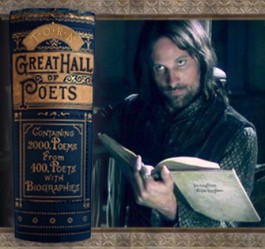
Welcome to The Great Hall of Poets, our regular feature showcasing the talent of Middle-earth fans. Each month we will feature a small selection of the poems submitted, but we hope you will read all of the poems that we have received here in our Great Hall of Poets.
So come and join us by the hearth, and enjoy!
If you have a Tolkien/Middle-earth inspired poem you’d like to share, then send it to poetry@theonering.net One poem per person may be submitted each month. Please make sure to proofread your work before sending it in. TheOneRing.net is not responsible for poems posting with spelling or grammatical errors.
In the heart of lonely winter,
beneath branches bare,
wearing thorny crowns,
they dash through frosty air.
Kings of the woodlands,
royal with noble grace,
among dark trees they run,
finding sport in the chase.
Over tall hills they travel,
winding through misty glens,
these wild stags of the forest,
racing in the winter winds.
© Copyright 2019 by Tom Frye

‘But last night I told you of Sauron the Great, the Dark Lord. The rumours that you have heard are true: he has indeed arisen again and left his hold in Mirkwood and returned to his ancient fastness in the Dark Tower of Mordor. That name even you hobbits have heard of, like a shadow on the borders of old stories. Always after a defeat and a respite, the Shadow takes another shape and grows again.’
Gandalf, The Fellowship of The Ring by J.R.R. Tolkien

It is the Second Age of Middle-earth. The tide turns and evil reveals itself as a figure lurking in the shadows. Sauron is here. Albeit, invisible. His presence hinted at in the form of a searing hallmark.
Following the drop of the The Rings of Power trailer at the San Diego Comic-Con, Tolkien enthusiasts like myself have repeatedly pored over the SDCC trailer in search of elements from Tolkien’s lore buried within the scenes of the show. With the use of some deductive reasoning and observation, it is highly probable that we have uncovered a unique point in the lore, seemingly disguised as an icy mark.
The icy mark, in question, appears in two instances within the trailer. In the first instance, we see the mark actively of three spikes forming over a hard and stony surface. In the second, it distinctly appears on what can only be described as a forging anvil. A common factor in both instances is how the mark incorporates actively freezing water to reveal its runic features.
To fully understand how this icy rune may have formed, we must apply some deductive reasoning. Water is a substance that transforms into its crystalline state (ice) at freezing temperatures. The instant formation of ice often indicates temperatures much lower than freezing (sub-zero).
Looking at the scene from the trailer again, we see crystals of ice form rapidly upon the stony surface. If we take another step back, we can perhaps also draw another conclusion. This icy mark is not a mark made of rapidly freezing water, but rather by the lack of ice crystals in the space where the rune is inscribed. This indicates that the inscription or branding must have been made with a searingly hot implement such that ice has finely crystallized along its edges. It also appears the inscription continues to be indefatigably hot to boot.
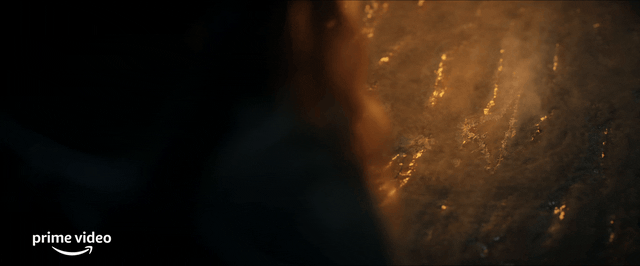
Weighing these factors together, we can revise a couple points:
In Middle-earth, one location appears to be the optimal location for sub-zero temperature conditions. The Forodwaith is a frozen wasteland in the northern reaches of Middle-earth, which is also categorically home to Mount Gundabad (the northernmost tip of the Misty Mountains). While historically connected with the Dwarves, Gundabad is deeply contested by Orcs during the Second and Third Ages. While we have received no clarification from Amazon on the matter, the clues suggest Gundabad could be the place where these runes appear.
Given their active heat-emitting properties and its connection to the forging craft, we must now ask how such runes have come to exist in a place where there are no other obvious signs of active metallurgical hot working.
What could possibly be as hot as an active volcano to have inscribed a searingly hot rune into stone and metal in the coldest part of Middle-earth? How is the area of this rune still hot even (presumably), long after the mark was embedded in the anvil and the anvil was last used to forge things?
Could it be that these searing, tripartite* marks were made at the hands of Sauron?
‘What evil it saith I do not know; but I trace here a copy of it, lest it fade beyond recall. The Ring misseth, maybe, the heat of Sauron’s hand, which was black and yet burned like fire, and so Gil-galad was destroyed; and maybe were the gold made hot again, the writing would be refreshed.’
Isildur describing the Ring. The Council of Elrond, The Lord of the Rings

While it is ambiguous how Sauron brands any object with his mark, the heat of Sauron’s hand seems to be an obvious ultimate source of hot working temperatures for forging with various metals. Moreover, it is clear the signature on the anvil and the sword suggests the same Maker. That is, Sauron is involved in the creation of these objects.
But what is the purpose of the Mark? What is the purpose of a broken sword found at the bottom of a barn in the Southlands? Is it evidence of Sauron’s attempts to create an object that ensnares the will of another? The first of its kind. A Morgul-knife that shares characteristics similar to the Rings of Power?
If that were the case, Theo surely faces a dark future as the series unfolds episode by episode.
‘They tried to pierce your heart with a Morgul-knife which remains in the wound. If they had succeeded, you would have become like they are, only weaker and under their command. You would have became a wraith under the dominion of the Dark Lord; and he would have tormented you for trying to keep his Ring, if any greater torment were possible than being robbed of it and seeing it on his hand.’
Gandalf to Frodo. Many Meetings, The Lord of the Rings
Finally, if we presume this tripartite mark to be the definitive mark of Sauron’s invisible yet haunting presence on Middle-earth, I say that anything that touches it will turn to ash.

Bootnote: The design of the tripartite mark reveals some similarities to the Helm of Sauron in Peter Jackson’s Lord of the Rings films. Per WETA’s design, Sauron’s helm has six distinct points — three tall points spaced along the points of a triangle; then three shorter points towards the front. We see the tripartite mark on the anvil and on the blade Theo holds bears a resemblance to the configuration of the three points towards the front of Sauron’s helm.

Second bootnote!
It’s also worth drawing attention to a mark we can see on the left breast of Finrod’s body in the SDCC trailer. This mark appears to be an inverted form of Sauron’s mark, with the prongs pointing downward. The left and right prongs are distinct, while the elongated center one is more indistinct. It appears to have been burnt into the corpse, possibly posthumously.
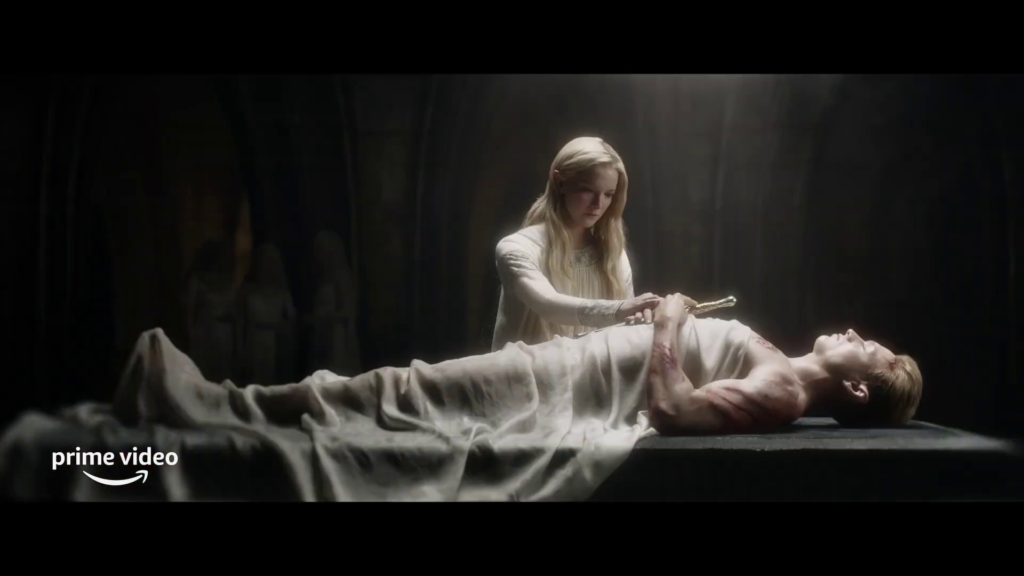
A posthumously applied mark would preserve the Silmarillion canon of Finrod’s death in the dungeons of Sauron at the hands of a great werewolf (note the claw marks on the left bicep and forearm).
The question that continues to puzzle is how the body comes into the possession of Galadriel.
However, Beren and Luthien liberate many elven thralls from the dungeons of Sauron. The showrunners might be taking a tack where they return the body to Nargothrond (The Silmarillion states that Galadriel spent time there). Alternately, it may be that the scene occurs on Tol-in-Gaurhoth itself. The latter would preserve the integrity of Finrod’s burial, but at the risk of intruding Galadriel into the Beren and Luthien story. Of course, if the scene occurs in flashback, we may never even (or require) get the full context — if it doesn’t serve the story, it can be left to the imagination of watchers to fill in the blanks however they want.
* Editor’s note: we’re calling it a tripartite mark because of those three spikes. Also, just as we were about to go to “print” with this piece, Stephen Colbert showed this clip as part of an interview with Morfydd Clark on The Late Show With Stephen Colbert. Looks like we were on the money.
About the author: DrNosy is a scientist (physical science), scholar, and Tolkien enthusiast. Her primary interests lie in review and analysis of The Lord of the Rings: The Rings of Power. She is an active contributor and Reading Room Moderator on TheOneRing.net Discord where she also hosts live open-forum panel discussions on The Rings of Power, The Silmarillion, and a variety of Tolkien-related topics. You can reach her on Twitter.
Acknowledgements: All these GIFs and the Colbert clip are thanks to the hard work of our fab Discord member, WheatBix.